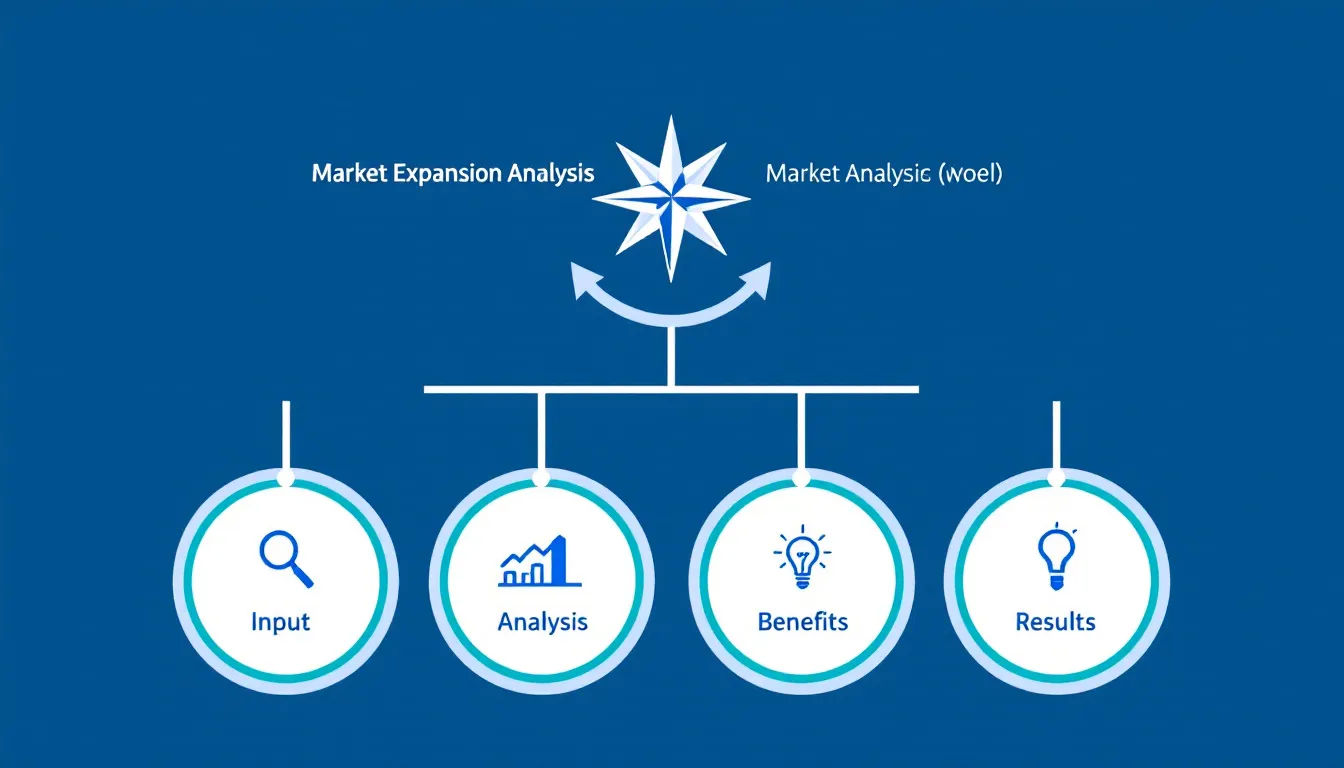Is this tool helpful?
How to Use the Market Expansion Potential Analysis Tool Effectively
This comprehensive tool helps businesses evaluate their market expansion opportunities through a systematic analysis of key factors. Here’s a detailed guide on using each field:
- Company Name: Enter your organization’s legal name. For example: “TechSolutions Inc.” or “Global Foods Limited”
- Product/Service Description: Provide detailed information about your offerings. Include key features, benefits, and unique selling propositions. Example inputs:
- “Sustainable bamboo housewares with biodegradable packaging, including kitchen utensils and storage containers”
- “AI-powered language translation software specializing in medical and legal terminology”
- Current Markets: Describe your existing market presence, including:
- Geographic regions
- Customer demographics
- Market segments
- Distribution channels
- Target Markets: Specify potential new markets you’re considering, including:
- Geographic locations
- Demographics
- Market segments
- Cultural considerations
- Business Goals: Define clear, measurable objectives for your expansion strategy
Understanding Market Expansion Potential Analysis
Market expansion potential analysis is a strategic evaluation process that helps businesses identify and assess opportunities for growth in new markets. This tool employs advanced algorithms to analyze various factors that influence market expansion success.
Core Components of Market Expansion Analysis
The analysis considers several key factors:
- Market size and growth potential
- Competition intensity
- Entry barriers
- Cultural alignment
- Economic factors
- Regulatory environment
Benefits of Using the Market Expansion Analysis Tool
Strategic Decision Making
- Data-driven insights for market selection
- Risk assessment and mitigation strategies
- Resource allocation optimization
- Competitive advantage identification
Operational Efficiency
- Streamlined market analysis process
- Time and cost savings in research
- Standardized evaluation methodology
- Improved decision-making accuracy
Business Growth
- Identification of high-potential markets
- Revenue diversification opportunities
- Scalable expansion strategies
- Enhanced market penetration success rates
Problem-Solving Capabilities
The tool addresses several critical business challenges:
Market Selection Complexity
By analyzing multiple factors simultaneously, the tool helps businesses narrow down potential markets based on their specific criteria and capabilities.
Risk Management
The analysis includes risk assessment factors such as:
- Political stability
- Economic conditions
- Market maturity
- Competition levels
Resource Optimization
The tool helps businesses allocate resources effectively by:
- Prioritizing high-potential markets
- Identifying required investments
- Estimating market entry costs
- Evaluating infrastructure needs
Practical Applications and Case Studies
Case Study 1: E-commerce Expansion
A digital marketplace specializing in handmade crafts used the tool to evaluate expansion opportunities:
- Initial Market: United States
- Target Markets: Canada, Australia, United Kingdom
- Results: Identified UK as primary expansion target due to:
- Similar consumer preferences
- Lower entry barriers
- Strong e-commerce infrastructure
Case Study 2: Manufacturing Company
An industrial equipment manufacturer evaluated Asian market opportunities:
- Initial Market: European Union
- Target Markets: Japan, South Korea, Singapore
- Outcome: Selected South Korea based on:
- Growing industrial sector
- Strong intellectual property protection
- Favorable trade agreements
Frequently Asked Questions
How does the tool determine market attractiveness?
The tool evaluates multiple factors including market size, growth rate, competition, and entry barriers to calculate an attractiveness score for each potential market.
Can the tool analyze multiple markets simultaneously?
Yes, the tool can compare multiple markets across various parameters to provide comprehensive comparison insights.
What types of businesses can benefit from this tool?
The tool is suitable for:
- Small and medium enterprises planning expansion
- Multinational corporations evaluating new markets
- Start-ups looking for growth opportunities
- Service providers seeking international clients
How often should market expansion analysis be performed?
It’s recommended to conduct analysis:
- Annually for strategic planning
- When significant market changes occur
- Before major investment decisions
- During business model pivots
What preparation is needed before using the tool?
To maximize the tool’s effectiveness, gather:
- Current market performance data
- Target market research
- Company growth objectives
- Available expansion resources
How can the results be integrated into business planning?
The analysis results can be used to:
- Develop market entry strategies
- Create resource allocation plans
- Set realistic expansion timelines
- Design localization approaches
Important Disclaimer
The calculations, results, and content provided by our tools are not guaranteed to be accurate, complete, or reliable. Users are responsible for verifying and interpreting the results. Our content and tools may contain errors, biases, or inconsistencies. We reserve the right to save inputs and outputs from our tools for the purposes of error debugging, bias identification, and performance improvement. External companies providing AI models used in our tools may also save and process data in accordance with their own policies. By using our tools, you consent to this data collection and processing. We reserve the right to limit the usage of our tools based on current usability factors. By using our tools, you acknowledge that you have read, understood, and agreed to this disclaimer. You accept the inherent risks and limitations associated with the use of our tools and services.







